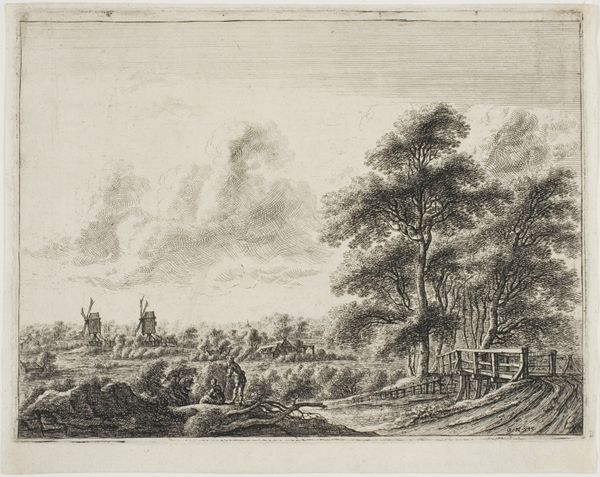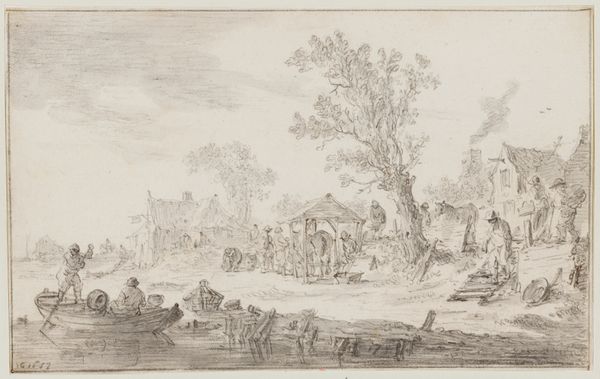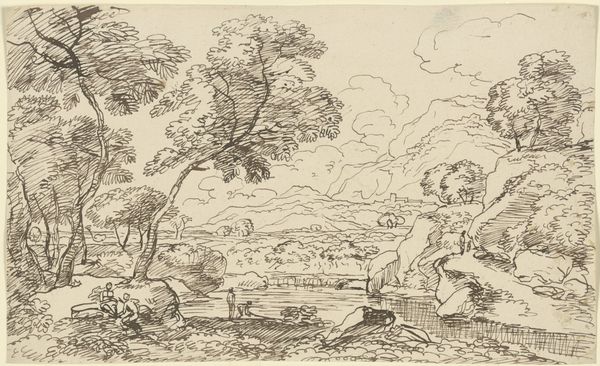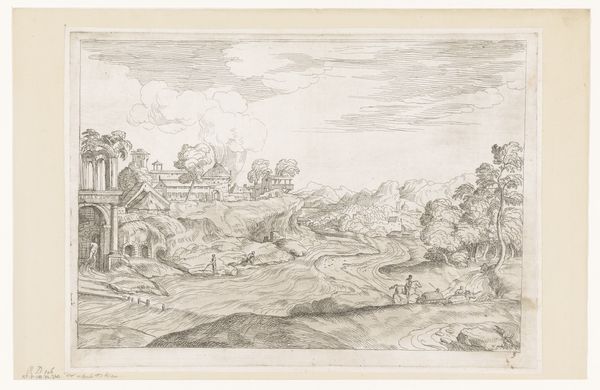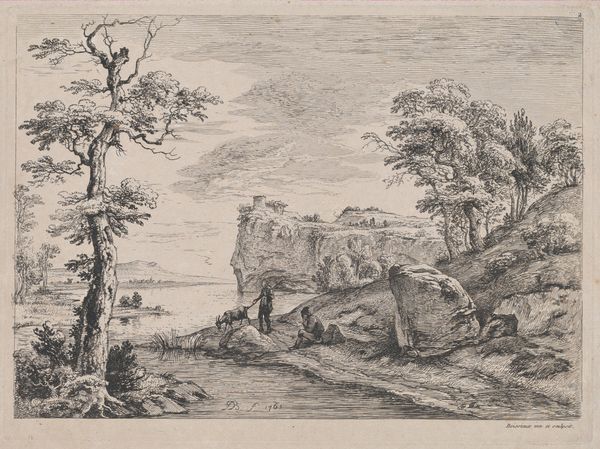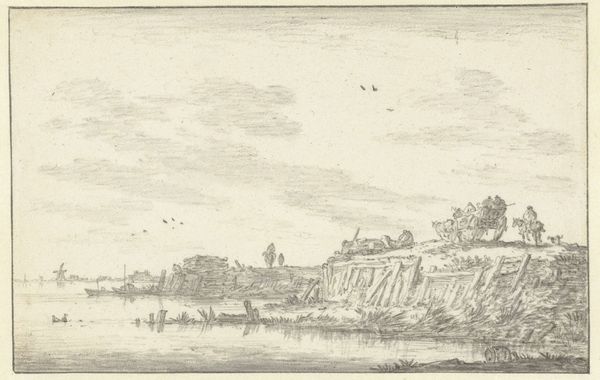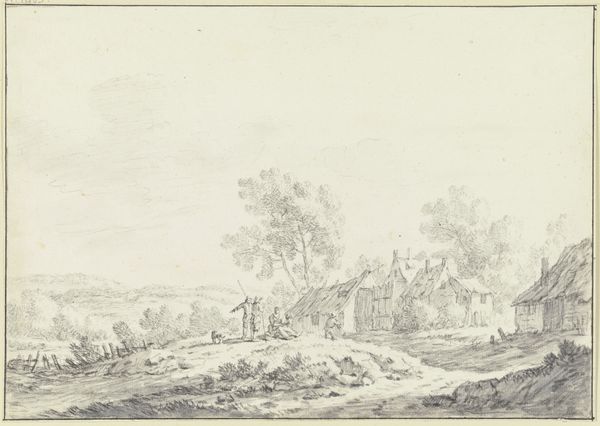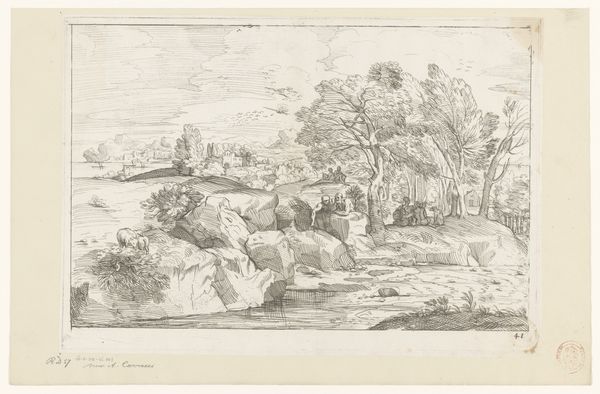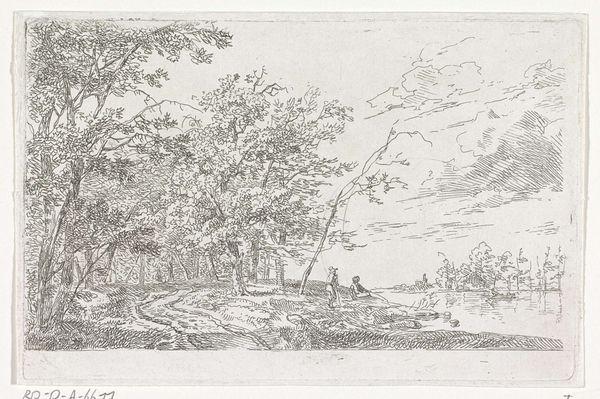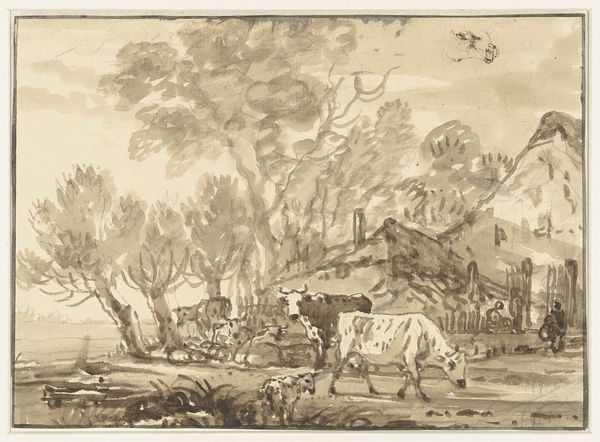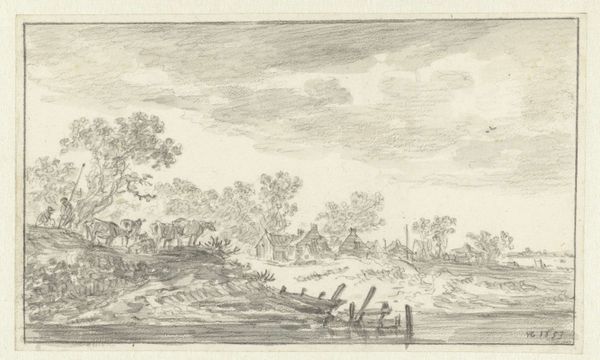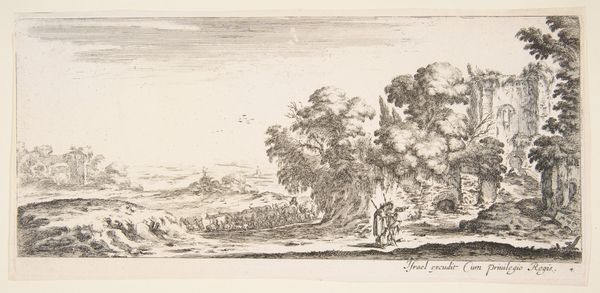
drawing, paper, ink, pencil, chalk, architecture
#
drawing
#
baroque
#
landscape
#
paper
#
ink
#
pencil
#
chalk
#
architecture
Copyright: Public Domain
Curator: Standing before us is Jan van Goyen’s "Ziehbrunnen mit hohem Hebebalken," a drawing completed in 1653. He employed a range of media – chalk, pencil, ink – all on paper, a delicate balance that brings this waterside scene to life. Editor: Immediately, it's the sheer mundanity that strikes me. A well, a few figures... but somehow, the atmosphere is palpable. The muted tones create a scene steeped in quiet contemplation. Almost like the artist briefly interrupted a simple everyday moment. Curator: Van Goyen was a master of the Dutch landscape, of course. This drawing really exemplifies the values they embraced during that time, that glorification of daily routines that's central to the period and their society. You have to see it in relation to Dutch water management, as well. In a sense, it's an engineering diagram celebrating practical innovations. Editor: An engineer, was he? Because I sense the artist, yes, but the engineering reads as pure accident. Notice that exaggerated well crane? He's used that element to lead us from the busy domestic action to that flat, hazy horizon. Also, I'm really feeling those delicate, barely-there lines that define the water, they really pull you into that scene. Curator: Absolutely, there's no question of Van Goyen's technical skill. Still, his focus always returned to the cultural and economic import of waterways during the Dutch Golden Age. The well here functions not just as a means of survival, but a reminder of a life lived in delicate symbiosis with an actively engineered environment. And if we focus on that symbiosis, this scene could stand as a metaphor for the success of Dutch maritime trade. Editor: You read diligence and pride into those gentle grey washes? I might read that as… wistfulness. There is a delicacy here which is also one of its melancholies. The ephemeral sense, this might not last, that hangs about even this quiet space… What are we preserving, after all? This very piece now rests in the Städel Museum collection. Time puts the well to good use. Curator: Well said, time grants everything a renewed utility! We have time for one last note. Van Goyen died only a few years after creating this work, didn’t he? He was very prolific, to say the least, and seeing his dedication really makes you think... Editor: Of lives lived humbly, by and large, for the sake of family. These subtle compositions... perhaps they aren’t as "plain" as I suggested before. It goes without saying that Goyen put so much more beneath these strokes, in the same manner, water is below us.
Comments
No comments
Be the first to comment and join the conversation on the ultimate creative platform.
